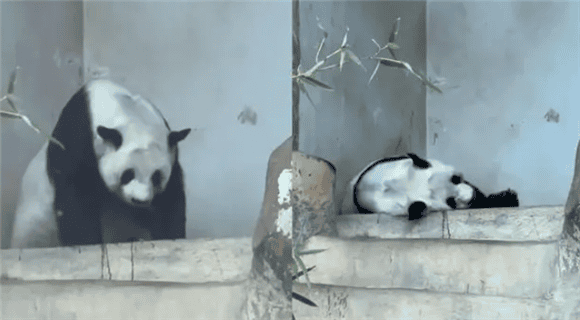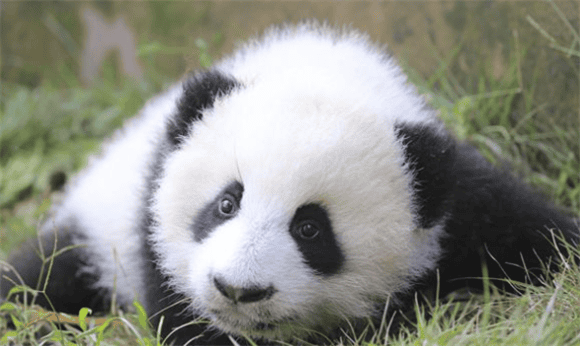The ancestors of the giant panda appeared in the early Pluvial Period 2-3 million years ago. According to research, the ancient names of giant pandas include tapir, white leopard, and Yu. From the early Cenozoic Era more than 2 million years ago to the middle and late Cenozoic Era 1 million years ago, giant pandas have been widely distributed in the southern half of my country, forming the giant panda stegodon fauna. Today, many species of this animal group have become extinct, but the giant panda has always survived, so the giant panda is known as a "living fossil".

The characteristics of giant pandas include a fat, bear-like body, Plump and plump, with a round head and short tail, the whole body is black and white, with round cheeks, big dark circles under the eyes, the iconic pigeon-toed walking style, and claws as sharp as scalpels. The giant panda has thick skin, is good at climbing trees, and loves to play.
The average lifespan of a panda is about 25 years old, and the lifespan of a giant panda in the wild is 18-20 years old. Under breeding conditions, the longest lifespan recorded for a giant panda is 38 years old.
The lifespan of a giant panda is about 25 years old, which is equivalent to 70 years of human life. If the growth environment is good, it can survive for 30 years. Moreover, the giant panda is a unique species in my country and is only distributed in my country. The mountainous areas of Gansu, Shaanxi, and Sichuan have fewer natural enemies and rich food sources, which is conducive to the growth of giant pandas.
In ancient Chinese documents, giant pandas were mentioned in the "Shan Jing" and "Huang Di Nei Jing" more than 2,000 years ago. At that time, people did not know the name of the giant panda, but named it after its special eating habits.
Giant pandas are a complete herbivore. They mainly eat bamboo and other plants, and bamboo contains a large amount of silicon and trace elements. These substances can enhance the hardness and corrosion resistance of giant pandas' teeth. It can also improve their immunity and digestion ability and promote food absorption. Therefore, people call giant pandas "iron-eating beasts", which means eating hard things like iron.
As time goes by, people learn more and more about giant pandas, and they discover that giant pandas do not eat hard things like iron, but eat bamboo. As a result, this title gradually faded out of people's sight. However, this title also reflects people's awe for giant pandas, because giant pandas are extremely precious and rare, and are worth cherishing just like exquisite ironware.
Today, the giant panda has become one of the important symbols of Chinese culture and one of the symbols of global wildlife protection. We should pay more attention to and protect giant pandas so that they can survive and develop better in nature.

Extended reading: Giant pandas like to climb trees
Giant pandas rely on eating bamboo To survive, they are originally carnivores and have the ability to be carnivores. However, due to the lack of meat in their living environment, after long-term evolution, giant pandas can also eat some meat, but most of them rely on bamboo to sustain their lives. Giant pandas are moisture-loving animals that live in the mountains and deep valleys in the upper reaches of the Yangtze River, where the climate is cool and humid, with humidity often above 80%.
Giant pandas must mate and give birth when they grow to a certain stage. Female giant pandas go into estrus once a year, and each time only lasts for 2-3 days. The estrus period is usually from March to May every year, and the gestation period is 83-200 months. Today, babies are usually born around August. Giant panda newborns are quite immature in their early stages of life, weighing only 0.1% of their mother's weight. Female giant pandas usually take 18 months, or even up to two years, to raise their babies.

 扫一扫微信交流
扫一扫微信交流
发布评论